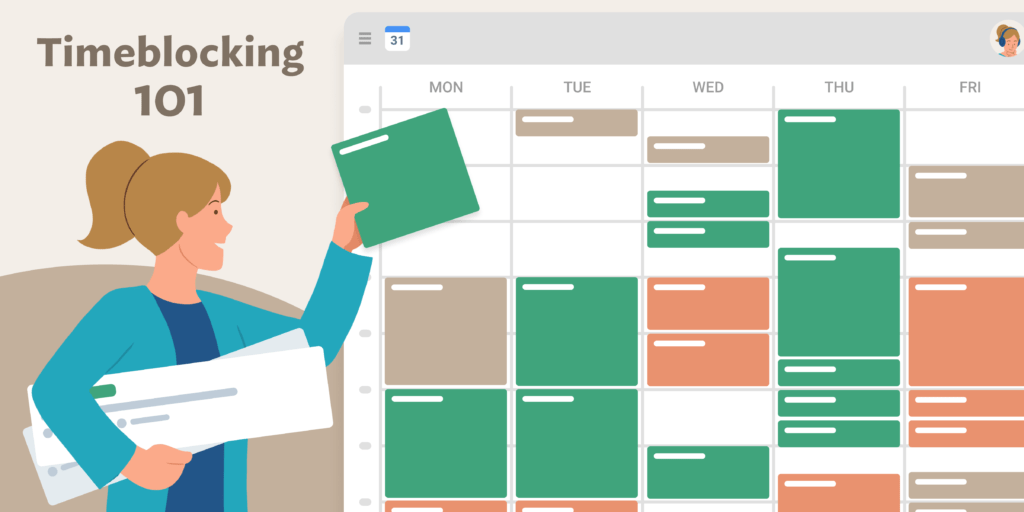As a new school leader, your days are filled with diverse responsibilities, from administrative tasks to classroom visits and meetings. Time blocking is an effective way to manage your time and stay on top of your duties. In this blog post, we’ll explore the history of time blocking, explain it, and provide a step-by-step guide to implementing this technique in your daily routine.
The History of Time Blocking
Time blocking, also known as time boxing, has roots in time management practices dating back to the early 20th century. It gained popularity through the work of productivity experts like Peter Drucker and Stephen Covey. The method involves dividing your day into specific blocks of time, each dedicated to a particular task or group of tasks. This approach helps to minimize distractions, increase focus, and ensure that important tasks receive adequate attention.
What is Time Blocking?
Time blocking is a time management technique where you schedule blocks of time for specific activities. Unlike a to-do list, which simply outlines tasks, time blocking assigns a specific time period for each task, ensuring that your day is structured and purposeful.
Benefits of Time Blocking
- Increased Focus: By dedicating specific time periods to tasks, you can concentrate fully on one activity without distractions.
- Enhanced Productivity: Structured schedules help you complete tasks more efficiently and avoid procrastination.
- Better Work-Life Balance: Allocating time for both work and personal activities can ensure a more balanced lifestyle.
- Improved Time Management: Time blocking helps you visualize how your time is spent and make adjustments as needed.
How to Implement Time Blocking: A Step-by-Step Guide
Step 1: Identify Your Tasks
Start by listing all the tasks you need to accomplish. This includes daily, weekly, and monthly tasks, both professional and personal. Categorize them into different types, such as:
- Administrative tasks
- Classroom visits
- Meetings
- Planning and preparation
- Personal time
Step 2: Prioritize Your Tasks
Determine the priority of each task. Use the Eisenhower Matrix to classify tasks into urgent and important, important but not urgent, urgent but not important, and not urgent and not important.
Step 3: Estimate Time Requirements
Estimate the amount of time needed to complete each task. Be realistic and allow some buffer time for unexpected interruptions.
Step 4: Create Time Blocks
Divide your day into blocks of time. Assign specific tasks or categories of tasks to each block. For example:
- 8:00-8:30 AM: Check and respond to emails
- 8:30-9:00 AM: Morning briefing with staff
- 9:00-11:00 AM: Classroom visits
- 11:00 AM-12:00 PM: Administrative tasks
- 12:00-1:00 PM: Lunch and informal check-ins
- 1:00-3:00 PM: Meetings and planning
- 3:00-4:00 PM: End-of-day wrap-up
Step 5: Use a Calendar
Use a digital calendar (such as Google Calendar) or a physical planner to schedule your time blocks. Color-code your blocks for easy reference and to distinguish between different types of activities.
Step 6: Stick to Your Schedule
Commit to following your schedule as closely as possible. If an unexpected task arises, try to fit it into an appropriate time block or adjust your schedule accordingly.
Step 7: Review and Adjust
At the end of each week, review your time-blocking schedule. Assess what worked well and what didn’t. Make necessary adjustments to improve your time management for the following week.
Time-Blocking Ideas for New School Leaders
- Morning Routine: Start your day with a set routine, such as checking emails, having a quick meeting with your administrative team, and setting your priorities for the day.
- Classroom Visits: Dedicate specific blocks of time for classroom visits to observe teaching, provide feedback, and support teachers.
- Administrative Tasks: Set aside time for paperwork, scheduling, and other administrative duties.
- Meetings: Schedule regular times for meetings with staff, parents, and other stakeholders.
- Planning and Preparation: Allocate time for planning school events, preparing for presentations, and developing strategic plans.
- Personal Time: Don’t forget to include time for lunch, short breaks, and personal activities to recharge.
Sample Weekly Schedule
| Time | Monday | Tuesday | Wednesday | Thursday | Friday |
|---|---|---|---|---|---|
| 8:00-8:30 AM | Check Emails | Check Emails | Check Emails | Check Emails | Check Emails |
| 8:30-9:00 AM | Morning Briefing | Morning Briefing | Morning Briefing | Morning Briefing | Morning Briefing |
| 9:00-11:00 AM | Classroom Visits | Classroom Visits | Classroom Visits | Classroom Visits | Classroom Visits |
| 11:00 AM-12:00 PM | Admin Tasks | Admin Tasks | Admin Tasks | Admin Tasks | Admin Tasks |
| 12:00-1:00 PM | Lunch & Check-ins | Lunch & Check-ins | Lunch & Check-ins | Lunch & Check-ins | Lunch & Check-ins |
| 1:00-3:00 PM | Meetings | Planning | Meetings | Planning | Meetings |
| 3:00-4:00 PM | End-of-Day Wrap-Up | End-of-Day Wrap-Up | End-of-Day Wrap-Up | End-of-Day Wrap-Up | End-of-Day Wrap-Up |
Conclusion
Time blocking is a powerful tool for new school leaders to manage their responsibilities effectively. By structuring your day into dedicated blocks of time, you can increase focus, enhance productivity, and maintain a healthy work-life balance. Implement these steps and ideas to control your schedule and confidently lead your school.



